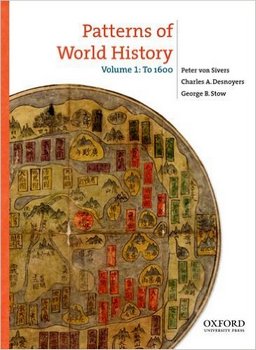Login
Разделы сайта
Поиск по сайту
Календарь
Реклама
Patterns of World History: Volume One: To 1600Военная история / Patterns of World History: Volume One: To 1600
 Название: Patterns of World History: Volume One: To 1600
Автор(ы): Peter von Sivers, Charles A. Desnoyers
Издательство: Oxford University Press
Год: 2012
ISBN: 978-0195332889
Страниц: 721
Язык: English
Формат: PDF
Размер: 390 MB
Patterns of World History offers a distinct framework for understanding the global past through the study of origins, interactions, and adaptations. Authors Peter von Sivers, Charles A. Desnoyers, and George Stow–each specialists in their respective fields–examine the full range of human ingenuity over time and space in a comprehensive, even-handed, and critical fashion.
The book helps students to see and understand patterns through: ORIGINS - INTERACTIONS - ADAPTATIONS
These key features show the O-I-A framework in action:
* Seeing Patterns, a list of key questions at the beginning of each chapter, focuses students on the 3-5 over-arching patterns, which are revisited, considered, and synthesized at the end of the chapter in Thinking Through Patterns.
* Each chapter includes a Patterns Up Close case study that brings into sharp relief the O-I-A pattern using a specific idea or thing that has developed in human history (and helped, in turn, develop human history), like the innovation of the Chinese writing system or religious syncretism in India. Each case study clearly shows how an innovation originated either in one geographical center or independently in several different centers. It demonstrates how, as people in the centers interacted with their neighbors, the neighbors adapted to–and in many cases were transformed by–the idea, object, or event. Adaptations include the entire spectrum of human responses, ranging from outright rejection to creative borrowing and, at times, forced acceptance.
* Concept Maps at the end of each chapter use compelling graphical representations of ideas and information to help students remember and relate the big patterns of the chapter.
|





 Информация
Информация